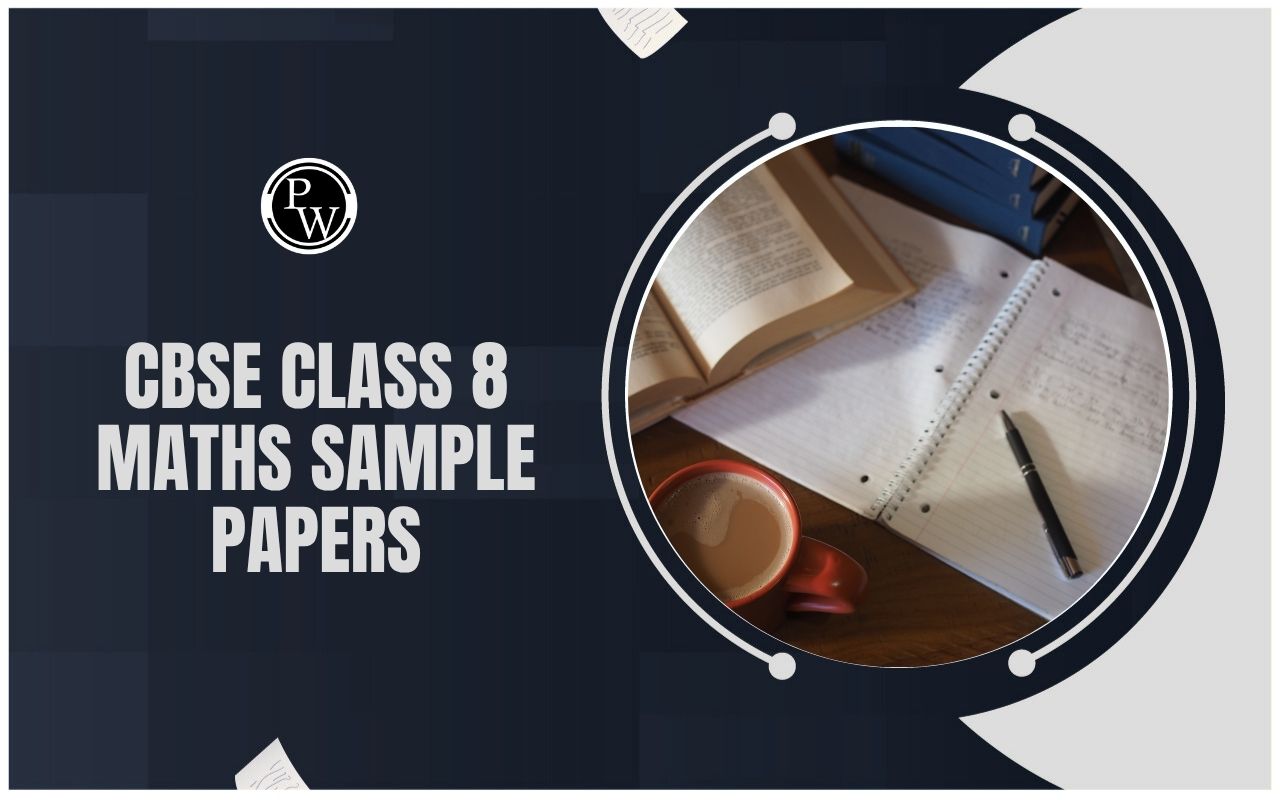
NCERT Solutions For Class 8 Science Chapter 11: Here are the NCERT Solutions for Class 8 Science Chapter 11: Force and Pressure, which will make it easier for students to understand the concepts. One of the fundamental ideas in science is the subject of force and pressure.
Understanding every aspect of this chapter is crucial because it contains the fundamentals for any student's future ambitions. By offering solutions to a range of problems, including multiple-choice questions (MCQs), fill-in-the-blanks, match-the-answers, true-or-false, and descriptive answer kinds, these NCERT Solutions for Class 8 Science assist students in achieving chapter excellence. Students are recommended to completely review the NCERT Solutions for Class 8 Science to understand the ideas covered in the chapter and to ensure that they receive good marks in the examination. The answers given here will assist students in learning about the notion of force, including its direction and quantity, changes in its shape or state of motion, the definition of pressure, and the application of pressure to liquids and gases. Use the link below to view the Class 8 Science NCERT Solutions for this chapter.NCERT Solutions For Class 8 Science Chapter 11 Overview
Students will get an understanding of several facets of this Science chapter from the NCERT Solutions for Class 8, which will subsequently enable them to solve problems from this chapter more readily. These solutions include exemplary problems, worksheets, critical questions, and HOTS in addition to the answers to the textbook questions. Students will encounter questions on applied force and changes in the shape of objects in Chapter 11, Force and Pressure. These NCERT Solutions provide a detailed explanation of several exam problems, such as the distinction between force and pressure. The other important categories of inquiries deal with objects and force. They will be able to demonstrate their understanding of the material by practicing the kind of questions in this chapter. Students may also obtain the NCERT Solutions for Class 8 Science Chapter 11 PDF here, and they can download it for free to use it offline. Here are the topics covered in this chapter -- Force – A Push or a Pull
- Forces are Due to an Interaction
- Exploring Forces
- A-Force Can Change the State of Motion
- Force Can Change the Shape of an Object
- Contact Forces
- Non-Contact Forces
- Pressure
- Pressure Exerted by Liquids and Gases
- Atmospheric Pressure
NCERT Solutions For Class 8 Science Chapter 11 PDF
Here we have provided NCERT Solutions For Class 8 Science Chapter 11 for the ease of students so that they can just download the pdf and use it easily without the internet. These NCERT Solutions for Class 8 Science Chapter 11 will help students understand the chapter better.NCERT Solutions For Class 8 Science Chapter 11 PDF
NCERT Solutions For Class 8 Science Chapter 11
Here we have provided NCERT Solutions for Class 8 Science Chapter 11 for the ease of students so that they can prepare better for their exams.1. Give two examples each of situations in which you push or pull to change the state of motion of objects.
Solution:
Situations where you can push or pull objects to alter their motion include 1. Pull scenarios A drawer requires pulling to open. The drawer moves differently as a result of this movement. b) The rope is pulled to extract water from the well. The bucket's motion is altered by this movement. 2. Press circumstances a) A player's foot pushes the football. The ball's motion is altered by this move. b) We have to push the hefty box from one room to another to move it. The box's momentum is altered by this action.2. Give two examples of situations in which applied force causes a change in the shape of an object.
Solution:
The following are the forces that cause an item to alter shape: i) The clay deforms when pressed between the hands. ii) Squeezing the plastic container causes it to alter its shape.3. Fill in the blanks in the following statements.
(a) To draw water from a well, we have to __________ at the rope.
(b) A charged body __________ an uncharged body towards it.
(c) To move a loaded trolley, we have to __________ it.
(d) The north pole of a magnet __________the north pole of another magnet.
Solution:
- To draw water from a well, we have to pull at the rope.
- A charged body attracts an uncharged body towards it.
- To move a loaded trolley, we have to pull or push it.
- The north pole of a magnet repels the north pole of another magnet.
4. An archer stretches her bow while aiming at the target. She then releases the arrow, which begins to move towards the target. Based on this information, fill up the gaps in the following statements using the following terms.
muscular, contact, non-contact, gravity, friction, shape, attraction
(a) To stretch the bow, the archer applies a force that causes a change in its __________.
(b) The force applied by the archer to stretch the bow is an example of __________ force.
(c) The type of force responsible for a change in the state of motion of the arrow is an example of a __________ force.
(d) While the arrow moves towards its target, the forces acting on it are due to __________ and that due to __________ of air
Solution:
etch the bow, the archer applies a force that causes a change in its shape . (b) The force applied by the archer to stretch the bow is an example of muscular force. (c) The type of force responsible for a change in the state of motion of the arrow is an example of a contact force. (d) While the arrow moves towards its target, the forces acting on it are due to gravity and that due to friction of air.5. In the following situations, identify the agent exerting the force and the object on which it acts. State the effect of the force in each case.
(a) Squeezing a piece of lemon between the fingers to extract its juice.
(b) Taking out paste from a toothpaste tube.
(c) A load suspended from a spring while its other end is on a hook fixed to a wall.
(d) An athlete making a high jump to clear the bar at a certain height
Solution:
a) We use our muscles to squeeze the lemon to get its juice. Consequently, the lemon's form is altered. b) We use our muscle power to extract the paste from the toothpaste tube. The toothpaste tube changes shape as a result of this muscle action. c) In this instance, the spring is forced downward by the hanging weight. The spring is subsequently stretched. Its form changes as a result. d) The athlete pushes the ground with his or her foot as they apply muscular force to it. They can now jump over the bar as a result. Their state of motion is subsequently altered.6. A blacksmith hammers a hot piece of iron while making a tool. How does the force due to hammering affect the piece of iron?
Solution:
A blacksmith hammers a hot piece of iron using their muscular effort. The iron is shaped differently by the muscle power, allowing for the required shape to be applied to it.7. An inflated balloon was pressed against a wall after it had been rubbed with a piece of synthetic cloth. It was found that the balloon stuck to the wall. What force might be responsible for the attraction between the balloon and the wall?
Solution:
A piece of synthetic cloth rubbed across an inflated balloon causes it to become charged. An uncharged body is drawn to a charged one. This charged balloon adheres to the wall when it is shoved up against it. Therefore, between the charged balloon and the wall, there is an electrostatic force at work.8. Name the forces acting on a plastic bucket containing water held above ground level in your hand. Discuss why the forces acting on the bucket do not bring a change in its state of motion.
Solution:
We utilize our muscles to hold the pail of water above the ground. The force of gravity that draws the bucket towards the earth is opposed by this muscular force. While the two forces have the same magnitude, their directions are different. Consequently, there is no net force acting on the bucket. Thus, the motion's status remains unchanged.9. A rocket has been fired upwards to launch a satellite in its orbit. Name the two forces acting on the rocket immediately after leaving the launching pad.
Solution:
The forces that draw the rocket towards the earth include gravity and friction caused by the earth's atmosphere, which prevents it from moving in the direction that it is intended to.10. When we press the bulb of a dropper with its nozzle kept in water, the air in the dropper is seen to escape in the form of bubbles. Once we release the pressure on the bulb, water gets filled in the dropper. The rise of water in the dropper is due to
(a) pressure of water
(b) gravity of the earth
(c) the shape of a rubber bulb
(d) atmospheric pressure
Solution:
a) The air pressure is causing the water in the dropper to increase. The atmospheric pressure pressing on the water causes the water to fill the dropper's nozzle once all of the air has been forced out of it.Benefits of NCERT Solutions For Class 8 Science Chapter 11
There are various advantages to using the NCERT answers for Ch. 8 Science, Class 8 PDF. Class 8: Force and Pressure: Questions and Answers PDF provides a comprehensive explanation of the basic ideas behind force and pressure. The concept of pressure, its calculation, and practical applications are explained in detail in Class 8 Science Chapter Force and Pressure Question Answer. The significance of friction, variables influencing friction, and ways to raise or decrease friction in real-world scenarios are all covered in Class 8 Science Force and Pressure. Students can easily and effectively finish their last-minute revision by using the Force and Pressure Class 8 PDF. The Force and Pressure Class 8 solutions are organized in a way that facilitates students' navigation of the chapter's various subjects and sections. Students can assess their comprehension of the ideas covered in the chapter by using the Force and Pressure practice questions and exercises included in Class 8 Science Chapter 8 Question Answer.NCERT Solutions For Class 8 Science Chapter 11 FAQs
What is the name of chapter 11 in NCERT science class 8?
What are the main points of force and pressure?
What is atmospheric pressure class 8 NCERT solution?









